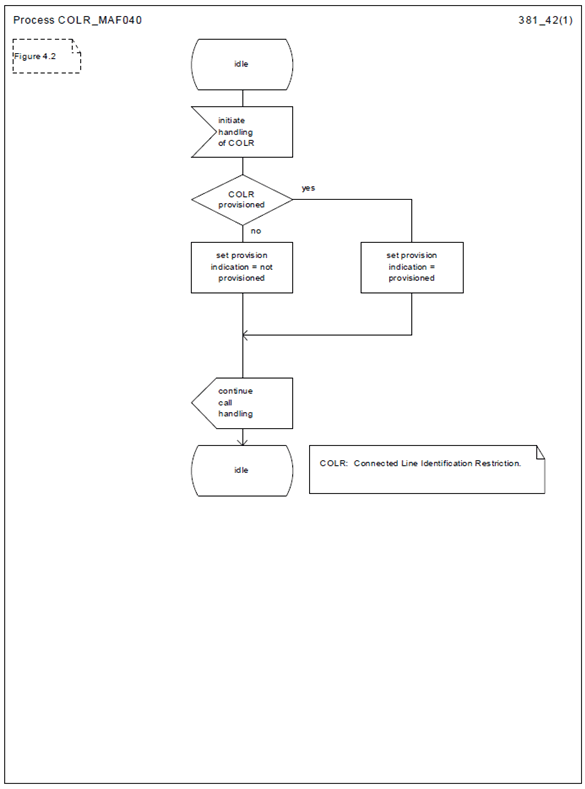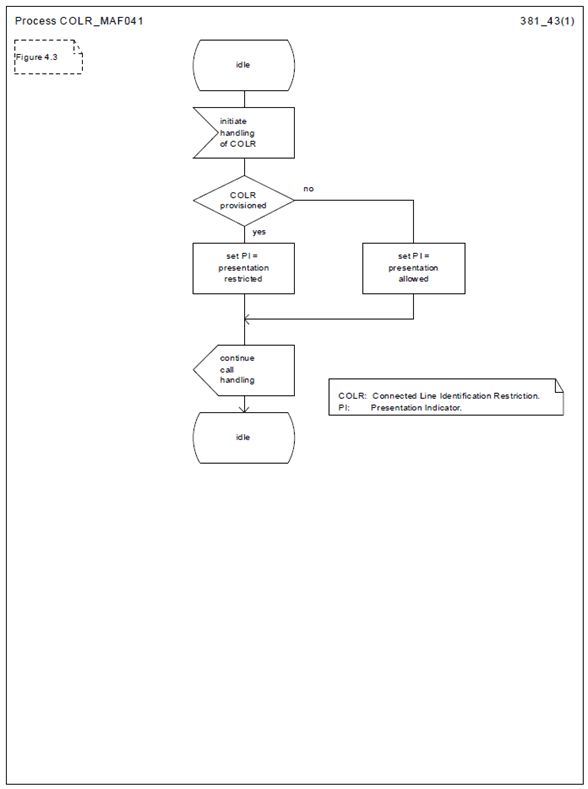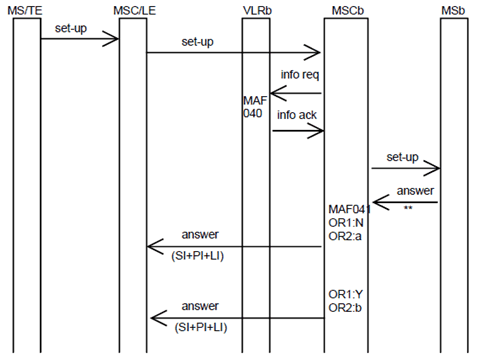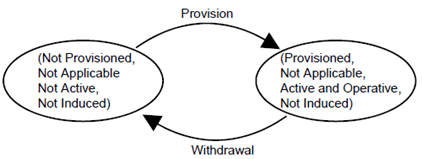Content for TS 23.081 Word version: 18.0.0
4 Connected line identification restriction (COLR)
4.1 Handling of connected line identification restriction
4.1.1 General
4.1.2 Interrogation
4.2 Functions and information flows
4.3 Information stored in the HLR
4.4 State transition model
4.5 Transfer of information from HLR to VLR
4.6 Information stored in the VLR
4.7 Handover
4.8 Interworking
4 Connected line identification restriction (COLR) p. 41
4.1 Handling of connected line identification restriction p. 41
4.1.1 General p. 41
If the terminating party has connected line identification restriction provisioned and it is impossible to indicate to the originating network (due to interworking) that the number should not be presented to the originating party, the connected line identity shall not be delivered to the originating network.
4.1.2 Interrogation p. 41
Status check
The mobile subscriber can request the status of the supplementary service and be informed if the service is provided to him/her. This procedure is illustrated in Figure 4.1.

Figure 4.1: Interrogation of connected line identification restriction
(⇒ copy of original 3GPP image)
(⇒ copy of original 3GPP image)
4.2 Functions and information flows p. 42
The following Mobile Additional Functions have been identified for the PLMN:
MAF040
Determination of the connected line identification restriction subscription
The ability of a PLMN component to determine whether the supplementary service is provisioned for the mobile subscriber. See Figure 4.2.
Location: VLR.
MAF041
Determination of the connected party number for offering to the calling party
The ability of a PLMN component to determine and to forward the connected line identity and related indications to the calling party. See Figure 4.3.
Location: terminating MSC.
The information flow is shown in Figure 4.4.

Figure 4.2: MAF040 Determination of connected line identification restriction subscription (VLR)
(⇒ copy of original 3GPP image)
(⇒ copy of original 3GPP image)


Figure 4.4: Information flow for connected line identification restriction: mobile station or fixed terminal to mobile station
(⇒ copy of original 3GPP image)
(⇒ copy of original 3GPP image)
4.3 Information stored in the HLR p. 46
COLR may have the following logical states (refer to TS 23.011 for an explanation of the notation):
| Provisioning State | Registration State | Activation State | HLR Induction State |
|---|---|---|---|
| (Not Provisioned, | Not Applicable, | Not Active, | Not Induced) |
| (Provisioned, | Not Applicable, | Active and Operative, | Not Induced) |
The HLR shall store the logical state of COLR (which shall be one of the valid states listed above) on a per subscriber basis.
4.4 State transition model p. 47
The following Figure shows the successful cases of transition between the applicable logical states of COLR. The state changes are caused by actions of the service provider.
Note that error cases are not shown in the diagram as they normally do not cause a state change. Additionally, some successful requests may not cause a state change. Hence they are not shown in the diagram.

4.5 Transfer of information from HLR to VLR p. 47
When the subscriber registers on a VLR, the HLR shall send that VLR information about the logical state of COLR.
If the logical state of COLR is changed while a subscriber is registered on a VLR then the HLR shall inform the VLR of the new logical state of COLR.
4.6 Information stored in the VLR p. 47
For COLR, the VLR shall store the service state information received from the HLR.
4.7 Handover p. 47
Handover will have no impact on the control procedures and the operation of the service.
4.8 Interworking p. 47
The VPLMN needs to distinguish three cases in order to meet data privacy requirements in an environment where support of COLP and COLR is optional:
- the HPLMN supports COLR, and COLR is provisioned for the subscriber;
- the HPLMN supports COLR, but COLR is not provisioned for the subscriber;
- the HPLMN does not support COLR.
- If the HLR supports COLR, but COLR is not provisioned for the subscriber, the HLR shall inform the VLR that COLR is not provisioned.
- If the VLR supports COLR, but the HLR does not support COLR, the VLR shall behave in the same way as if COLR was provisioned for the subscriber, i.e. the connected line identity shall not be displayed to the calling subscriber unless the calling subscriber has COLR override capability. When interrogating the service status the subscriber shall be informed that COLR is provided to him and is active.